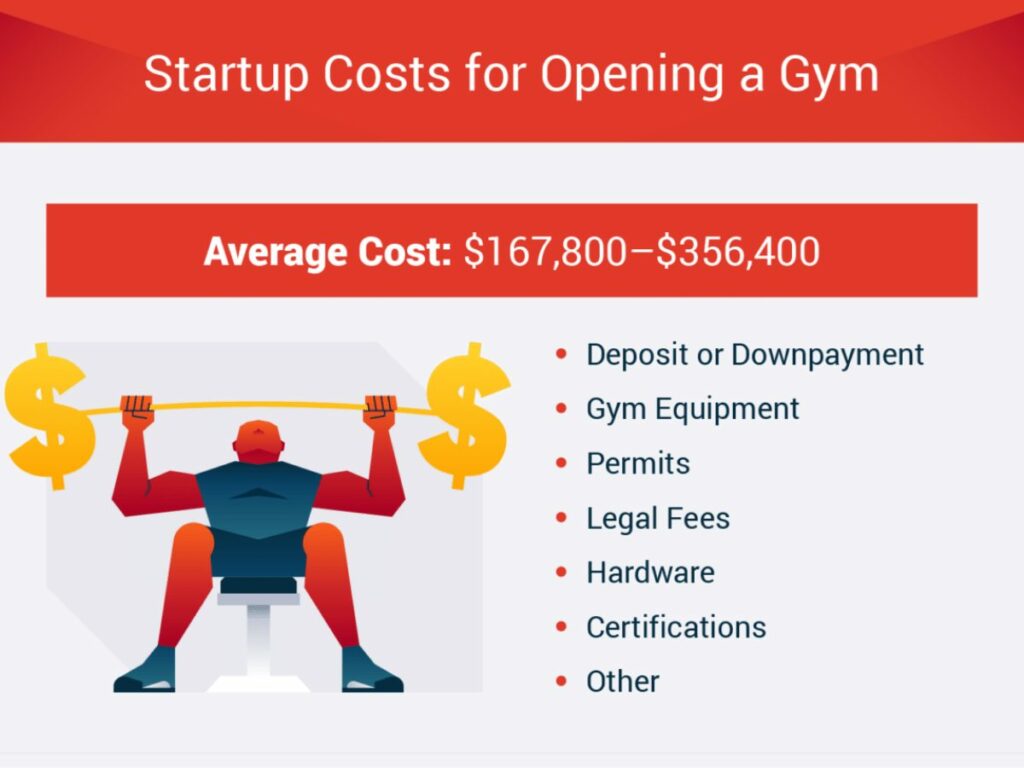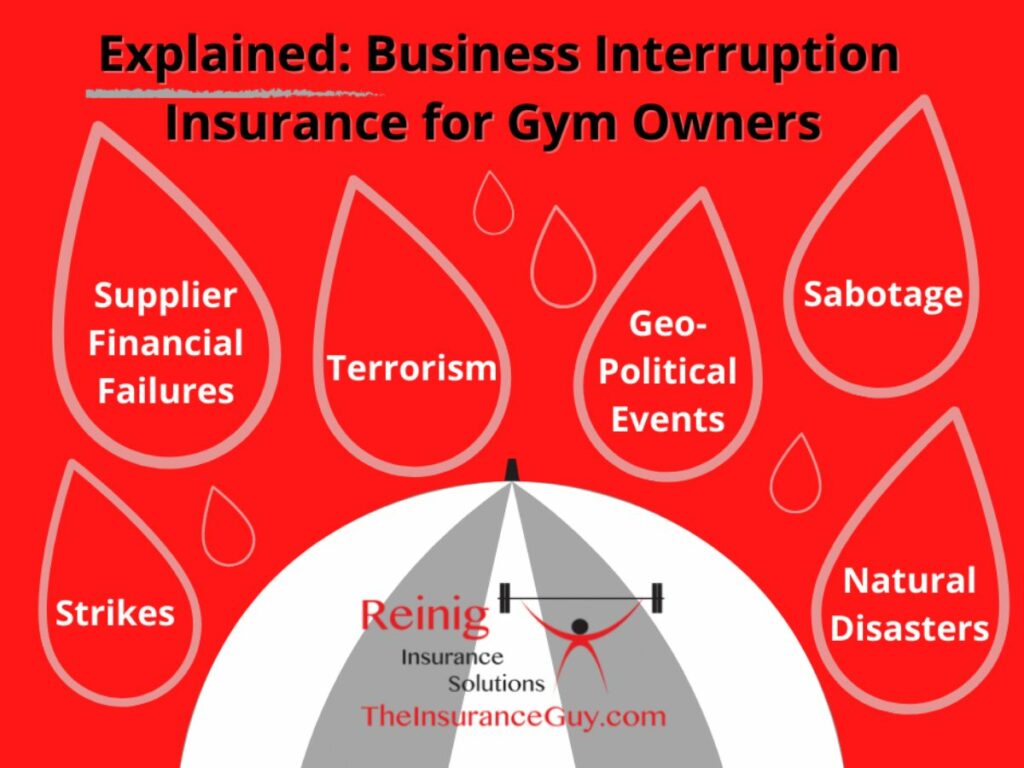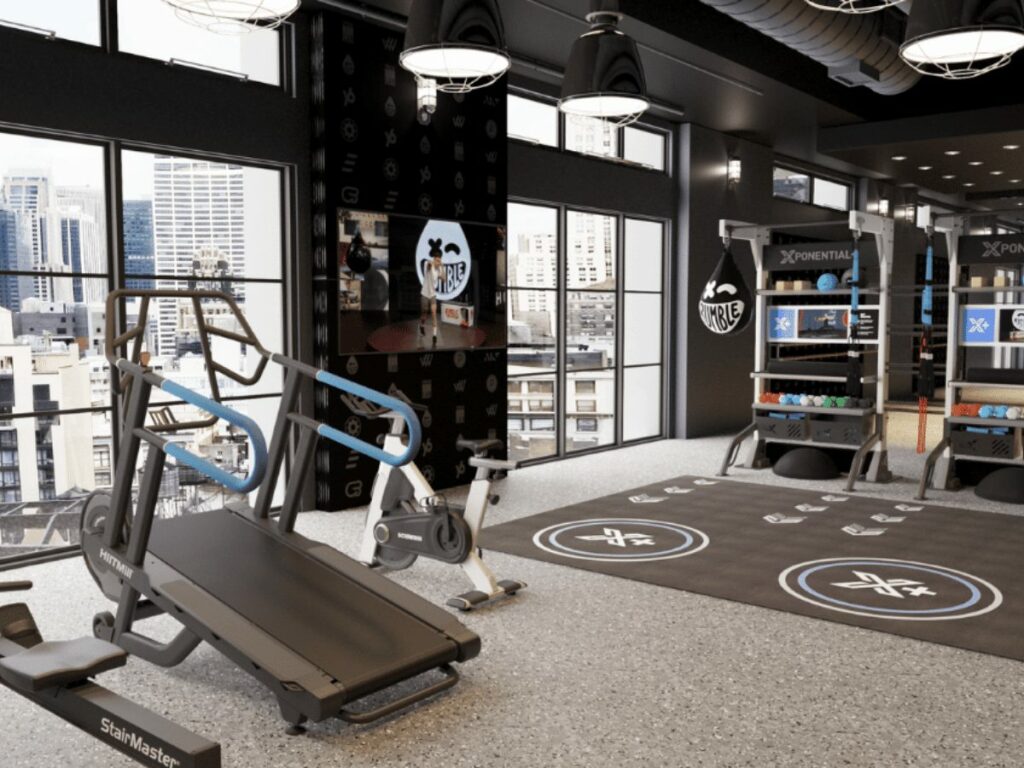Are you ready to take the plunge into the world of gym franchises, but feeling overwhelmed and unsure where to begin? Don’t worry, you’re not alone. Opening a gym franchise can be a daunting process, with many factors to consider.
In this article, I’ll guide you through the essential steps to successfully launch a gym franchise, from finding the right location to marketing your business effectively. With my insights and tips, you’ll be well-equipped to turn your gym franchise dream into a reality.
So, keep reading to discover the secrets of launching a successful gym franchise!
Table of Contents
1. Research and Planning Phase
A gym franchise’s success, particularly when considering the most profitable gym franchises, hinges on meticulous research and planning. Delve into market analysis, target audience identification, and business model selection, making sure the foundation is rock-solid for the journey ahead.
Market Demands
Understanding the local market demands and identifying a suitable franchise that resonates with the target audience is crucial. Analyzing local trends, competition, and potential customer base is vital in selecting a franchise that aligns with market demands. Having undergone the selection process, I found that aligning with a brand that reflected my values was paramount.
Highlights:
- Deep insights into customer preferences
- Leveraging the franchise’s established brand
- Better preparedness against competition
- Tailored services
- Informed decision-making
Challenges:
- Difficulty in identifying a target audience
- Stiff competition
- Changing trends and preferences
Crafting a Business Plan
Developing a comprehensive business plan is essential, especially when considering a boutique fitness franchise, as it serves as a roadmap, outlining goals, strategies, and financial projections. A business plan should encompass market analysis, target customer definitions, financial projections, and operational strategies. From my experience, a well-crafted business plan was an invaluable resource during the early days of my gym.

Highlights:
- Sets clear goals and objectives
- Aids in securing funding
- Acts as an internal guide
- Provides measurable metrics
- Assists in mitigating risks
Challenges:
- Uncertain revenue projections
- Defining a unique selling point
- Continuous adaptation
Legal Requirements
Comprehending and complying with legal requirements is indispensable to ensure the gym operates within the confines of the law. This involves obtaining necessary permits, ensuring compliance with local regulations, and understanding legal obligations related to employment, safety, and customer data protection.

Highlights:
- Prevention of legal issues
- Builds a trustworthy brand
- Compliant business operations
- Protection of consumer rights
- Employee safety and security
Challenges:
- Understanding local regulations
- Intellectual property protection
- Creating legally binding agreements
Necessary Credentials
Ensuring proper certification and credentials is vital for both the owner and the staff, guaranteeing professional service. For example, becoming a certified fitness instructor or personal trainer can be relatively inexpensive and invaluable. There are reputable organizations that offer certifications like AFAA, NETA, ACE, ISSA, ACSM, etc.
Highlights:
- Enhanced credibility
- Upgraded skills and knowledge
- Compliance with industry standards
- Increased customer trust
- Professional development
Challenges:
- Professional certifications
- Accreditation
- Keeping abreast with industry advancements
2. Financing and Funding
When opening a gym franchise, the fuel that propels the dream into reality is financing and funding. Exploring various funding options such as bank loans, investors, or personal savings ensures that there is ample capital for initial setup and to keep the wheels turning.
Costs and Capital
Accurately estimating both the startup and operational costs, including gym franchises cost, is essential. This will help in securing the necessary funds either through loans, investments, or personal savings. Some common startup costs associated with opening a gym include lease security deposits, gym equipment, branding, and initial staffing. It’s also critical to anticipate operating costs such as rent, utilities, insurance, and maintenance.
Highlights:
- Realistic budget allocation
- Prioritized spending
- Informed financial decision-making
- Sufficient funds for emergencies
- Effective cost management
Challenges:
- Heavy upfront investment
- Ongoing maintenance
- Unanticipated costs such as repairs or additional equipment
Securing a Franchise
Buying into a franchise, including crossfit franchises, involves financial commitments. Understanding and satisfying these requirements is necessary to secure a franchise. This includes initial investment, franchise fees, royalty fees, and other associated costs. Some franchises might also require the owner to have a certain net worth and liquid capital.

Highlights:
- Access to an established brand
- Support and training from the franchisor
- Higher chances of profitability
- Streamlined setup process
- Network opportunities
Challenges:
- Selecting the right franchise
- Meeting franchise requirements
- Adherence to franchise rules
Financing Options
Considering various financing options is crucial to secure the capital needed for the business. Options include bank loans, Small Business Administration (SBA) loans, private investors, and crowdfunding. A friend of mine, for example, managed to start his gym using a credit card and successfully repaid without any interest.
Highlights:
- Diverse funding sources
- Potential for better interest rates
- Financial security during the launch
- Tailored repayment plans
- Leverage for scaling the business
Challenges:
- Access to Capital
- Negotiating favorable terms
- Dependence on external funding
Financial Risk Management
Establishing risk management practices safeguards the business against unforeseen financial difficulties. This includes diversifying investments, setting aside emergency funds, having insurance, and regularly reviewing financial statements. I have seen diligent financial risk management play a pivotal role in sustaining the business during tough times.
Highlights:
- Reduced financial vulnerabilities
- Increased business resilience
- Informed financial decision-making
- Safeguarding investments
- Long-term financial stability
Challenges:
- Cash flow management
- Handling debt
- Preparing for economic downturns

3. Facility Setup and Equipment Procurement
Selecting an optimal location and designing the gym layout sets the stage for the business while procuring top-notch equipment ensures customer satisfaction. Aligning the facility setup with the brand image and ensuring seamless logistics for equipment procurement can make the difference between success and mediocrity.

Location Selection
Choosing an optimal location for the gym is imperative to ensure accessibility for the target audience. It involves considering factors such as demographics, competition, visibility, and accessibility. Some fitness centers, are known for convenience and tend to open in neighborhood locations.
Highlights:
- Increased customer footfall
- Higher brand visibility
- Convenient access for customers
- Positive community integration
- Enhanced marketing opportunities
Challenges:
- Finding a location that is easily accessible
- Striking a balance between a prime location and rent
- Scalability
Procuring Equipment
At Yanre Fitness every piece of equipment is made of quality. Acquiring the right equipment is necessary to cater to customer needs and ensure that the gym provides value. This entails analyzing customer preferences and ensuring the availability of diverse and quality equipment. Common equipment includes weights, treadmills, exercise bikes, and specialized equipment based on the gym’s focus.
Highlights:
- Enhanced customer experience
- Catering to diverse fitness needs
- Building a reputable brand
- Potential for specialized training
- Increased customer retention
Challenges:
- Quality gym equipment often comes with a hefty price tag
- Ensuring a variety of equipment
- Maintenance and replacement
Facility Layout
I believe that an effective gym layout and captivating interior design can greatly enhance the customer experience. Ensuring that the facility is well organized, aesthetically pleasing, and functional contributes to customer satisfaction and brand reputation.
Highlights:
- Increased customer satisfaction
- Efficient use of space
- Safe workout environment
- Positive atmosphere for training
- Enhanced brand identity
Challenges:
- Optimal space utilization
- Safety and flow
- Adaptability
Compliance and Permits
Ensuring that the gym complies with relevant regulations and acquires necessary permits is essential for legal operations. This encompasses acquiring health and safety certifications, and business licenses, and ensuring adherence to local regulations.
Highlights:
- Legal business operations
- Reduced risk of penalties
- Positive public perception
- Trust-building with customers
- Compliance with ethical standards
Challenges:
- Keeping abreast with regulations
- Obtaining the necessary permits for operations
- Zoning and land use
The table provides an overview of the compliance requirements and permits necessary for opening a gym franchise, ensuring legal operations and adherence to relevant regulations.
| Compliance/Permit | Description |
| Business License | A legal document that grants permission to operate a gym franchise within a specific jurisdiction. It is typically obtained from the local government or municipality. |
| Health and Safety Certification | Certification demonstrating compliance with health and safety regulations, ensuring a safe environment for gym members and employees. This certification may include proper sanitation, emergency preparedness, equipment maintenance, and employee training. It is often issued by health departments or relevant regulatory bodies. |
| Zoning Compliance | Ensuring that the gym franchise is located in a zone designated for commercial or fitness-related activities. It involves confirming that the gym’s location aligns with local zoning laws and regulations. |
| Building Permits | Permission obtained from the local building authority to construct or renovate the gym facility. This permit ensures compliance with construction codes, fire safety regulations, accessibility standards, and other building-related requirements. |
| Signage Permits | Authorization to display signage for the gym franchise. This permit may involve obtaining approval for the design, size, and placement of exterior signage to comply with local regulations and aesthetic guidelines. |
| Environmental Permits | Certain gym facilities may require environmental permits if they involve specific activities that impact the environment, such as the installation of a swimming pool or the handling of hazardous materials. These permits ensure compliance with environmental regulations and may involve assessments and inspections. |
| Employment Permits | Gym franchises may need to obtain employment permits or licenses to hire and employ staff legally. These permits typically involve verifying the eligibility of employees to work in the country or region, adhering to labor laws, and ensuring appropriate documentation is in place. |
| Music Licensing | If the gym plays music for its customers, it may require music licensing to comply with copyright laws. This permits the gym to legally play copyrighted music and may involve obtaining licenses from music licensing organizations. |
| Insurance Coverage | While not a permit, having appropriate insurance coverage is crucial for a gym franchise. This may include general liability insurance, workers’ compensation insurance, and property insurance to protect against potential risks and liabilities. |
4. Staffing and Training
A best gym franchise flourishes with a team of highly skilled and motivated staff. Hiring proficient trainers, administrative staff, and maintenance personnel, and providing them with the necessary training, reflects the commitment to excellence and boosts customer trust.
Hiring Strategies
Implementing effective hiring strategies is vital for staffing the gym with qualified and motivated personnel. This includes creating job descriptions, sourcing candidates, conducting interviews, and evaluating credentials. My experience taught me that a motivated and qualified staff is invaluable for a gym’s success.
Highlights:
- Qualified staff
- Enhanced customer service
- Positive work environment
- Efficient operations
- Brand reputation enhancement
Challenges:
- Attracting talent
- Competitive compensation
- Thoroughly vetting potential employees
Training and Development
Regular training and development initiatives are vital in ensuring that the staff is well-equipped to meet customer needs. This includes onboarding programs, skill development, certifications, and career development opportunities.
Highlights:
- Improved staff competency
- Adherence to industry standards
- Enhanced customer service
- Employee retention
- Continuous quality improvement
Challenges:
- Ensuring staff members are trained in the latest fitness trends
- Encouraging and facilitating opportunities for staff gain additional certifications
- Implementing standardized training programs
Staff Management
Effective staff management ensures that the gym operates smoothly and that the staff is aligned with the business’s objectives. This involves scheduling, communication, conflict resolution, and performance evaluations. The U.S. Bureau of Labor Statistics notes that employment of fitness trainers and instructors is projected to grow 19 percent from 2021 to 2031, much faster than the average for all occupations.
Highlights:
- Streamlined operations
- Enhanced staff performance
- Positive work environment
- Effective communication
- Conflict resolution
Challenges:
- Retention strategies
- Performance evaluation
- Conflict resolution
Building a Community
Building a community within the gym is essential for creating a positive environment that encourages customer loyalty. This entails fostering relationships with and among customers, staff engagement, and creating a sense of belonging. I can tell, building a community was one of the most rewarding aspects of owning a gym, and it contributed significantly to customer loyalty.
Highlights:
- Increased customer retention
- Positive brand image
- Enhanced customer satisfaction
- Networking opportunities
- Word-of-mouth marketing
Challenges:
- Member engagement
- Establishing collaborations with local businesses
- Engaging in community outreach
5. Pre-Launch Marketing and Promotion
Creating a buzz before the gym’s doors open is crucial in attracting an initial customer base. Through engaging marketing campaigns and well-crafted promotions, the brand can establish its presence and lay the groundwork for a successful launch.
Brand Identity
Establishing a brand identity is fundamental in attracting members. A unique brand identity will help the gym franchise stand out amongst competitors. Focus on creating a logo, defining the target market, and choosing a color scheme that reflects the gym’s personality. A distinct brand can create an emotional connection with potential members.
Highlights:
- Enhances recognition among potential members
- Builds trust with consumers
- Facilitates targeted marketing efforts
- Enhances loyalty and community building
- Sets your gym apart from competitors
Challenges:
- Consistency across franchise
- Adapting to local markets
- Creating a unique brand identity that distinguishes the gym from competitors
Market Research
Market research is essential for understanding the demands and preferences of the target audience. By analyzing market trends, potential competitors, and consumer behavior, the franchise can position itself to meet specific needs within the community. I can’t stress enough how critical this step was in the business.
Highlights:
- Identifies consumer needs and preferences
- Provides insights into competitors
- Helps in the allocation of resources efficiently
- Supports informed decision-making
- Assists in identifying potential challenges and opportunities
Challenges:
- Gathering accurate data
- Analyzing consumer behavior
- Market segmentation
Licenses and Insurances
Before the launch, it is imperative to secure all the necessary licenses and insurance for operating the gym franchise. This involves adhering to local regulations and ensuring the business is compliant. This step saved me from unforeseen legal issues in the past.
Highlights:
- Ensures compliance with local regulations
- Protects the business from legal liabilities
- Boosts customer trust in your business
- Helps in avoiding unnecessary fines and penalties
- Facilitates smooth business operations
Challenges:
- Ensuring that the gym has adequate insurance coverage
- Keeping track of license and insurance renewals
- Customized insurance packages
Online Presence
In today’s digital age, having an online presence through a website and social media platforms is indispensable. It helps in reaching a broader audience and effectively promoting the gym franchise. The digital transition today is a game-changer.
Highlights:
- Increases brand visibility
- Allows for targeted marketing campaigns
- Facilitates customer engagement
- Enables gathering of customer feedback
- Boosts brand credibility
Challenges:
- Developing effective website
- Creating and sharing content that resonates with the target audience
- Monitoring and responding to online reviews and feedback
6. Grand Opening and Operations
The grand opening is the curtain-raiser that unveils the gym franchise to the world. Ensuring smooth operations from day one, with well-planned schedules and top-notch client service, paves the way for establishing the gym as a preferred fitness destination.
Ideal Spot
The place of gym franchise plays a significant role in attracting members. Choose a spot that is easily accessible and in proximity to the target audience. There are gym business owners that strategically place their franchise gyms in areas with high foot traffic.
Highlights:
- Increases visibility and foot traffic
- Facilitates convenience for members
- Impacts the brand image positively
- Affects operational costs such as rent
- Can create partnerships with nearby businesses
Challenges:
- Struggle Against Competitors
- Market Saturation
- Costly Real Estate
Equipment and Facilities
Invest in high-quality gym equipment and ensure that the facilities are set up to create a conducive environment for workouts, even when considering the cheapest gym franchise. From my point of view, the equipment should cater to the needs of various fitness levels and preferences. Check some quality gym equipment at Yanre Fitness.
Highlights:
- Attracts and retains members through high-quality experience
- Helps to meet diverse fitness needs
- Increases safety and reduces the risk of injuries
- Enhances your gym’s reputation for quality
Challenges:
- High Maintenance Costs
- Adapting to Trends
- Aesthetic Appeal
Membership Plans
Speaking from experience, implementing membership plans that cater to different needs and preferences is essential. Also, create loyalty programs to encourage member retention and referrals.
Highlights:
- Boosts revenue through membership sales
- Encourages member retention and engagement
- Facilitates customer feedback and relationship-building
- Increases word-of-mouth marketing through referrals
Challenges:
- Attracting new members
- Keeping existing members engaged and satisfied
- Developing a membership pricing model that is competitive, yet profitable
7. Ongoing Marketing and Growth
Continual growth is pivotal for the gym franchise’s sustainability. By constantly innovating marketing strategies and evaluating performance metrics, the brand can adapt to changing market trends and scale new heights in the fitness industry.
Marketing Strategies
Incorporate various digital marketing strategies, including search engine optimization (SEO), to enhance the gym’s online presence. According to Berkeley, at its core, SEO has the potential to bring more organic attention to your business — which means it doesn’t cost you anything. Utilizing these factors will ensure that the gym is visible to people making relevant search queries.
Highlights:
- Increases brand visibility and online traffic
- Helps target specific audiences effectively
- Facilitates measurable marketing campaigns
- Enhances member engagement and feedback collection
Challenges:
- Breaking through the competition and establishing a unique selling proposition
- Identifying and focusing on a niche market
- Creating an effective online presence through social media
Customer Feedback
I can vouch collecting customer feedback regularly to understand what the gym is doing well and areas that require improvement are helpful. Utilize this feedback to make necessary adjustments to the services and facilities of the gym business.
Highlights:
- Helps in improving the quality of services and facilities
- Builds trust through customer involvement
- Supports informed decision-making
- Enhances customer satisfaction and retention
Challenges:
- Actively gathering feedback from members can be challenging, as not all members are equally vocal or willing to participate in surveys
- Quickly and effectively addressing any negative feedback and implementing solutions to ensure customer satisfaction
- Analyzing and effectively utilizing feedback to enhance services, offerings, and the overall member experience
Services and Offerings
As the gym business grows, consider expanding its services and offerings also. This can include adding new classes, and services, or even opening new locations.
Highlights:
- Diversifies revenue streams
- Attracts new members
- Encourages existing members to try new services
- Positions your gym as an evolving and innovative brand
Challenges:
- Adapting to personalized fitness demand
- Essential amenities like seating arrangements, lighting, and security devices
- Individuals who are not only skilled but also capable of motivating and keeping clients satisfied
Conclusion
Opening a gym franchise is a strategic move for entrepreneurs in the fitness industry. By partnering with a reputable brand, you can leverage their experience, resources, and support to establish a successful business with minimized risks and optimized returns.
Don’t wait any longer! Get in touch with Yanre Fitness, your reliable fitness equipment supplier, to elevate your gym franchise journey. We’re committed to providing top-quality products at competitive prices. Contact us for our extensive product catalogue, price list, or any assistance you may need.
Related articles:








